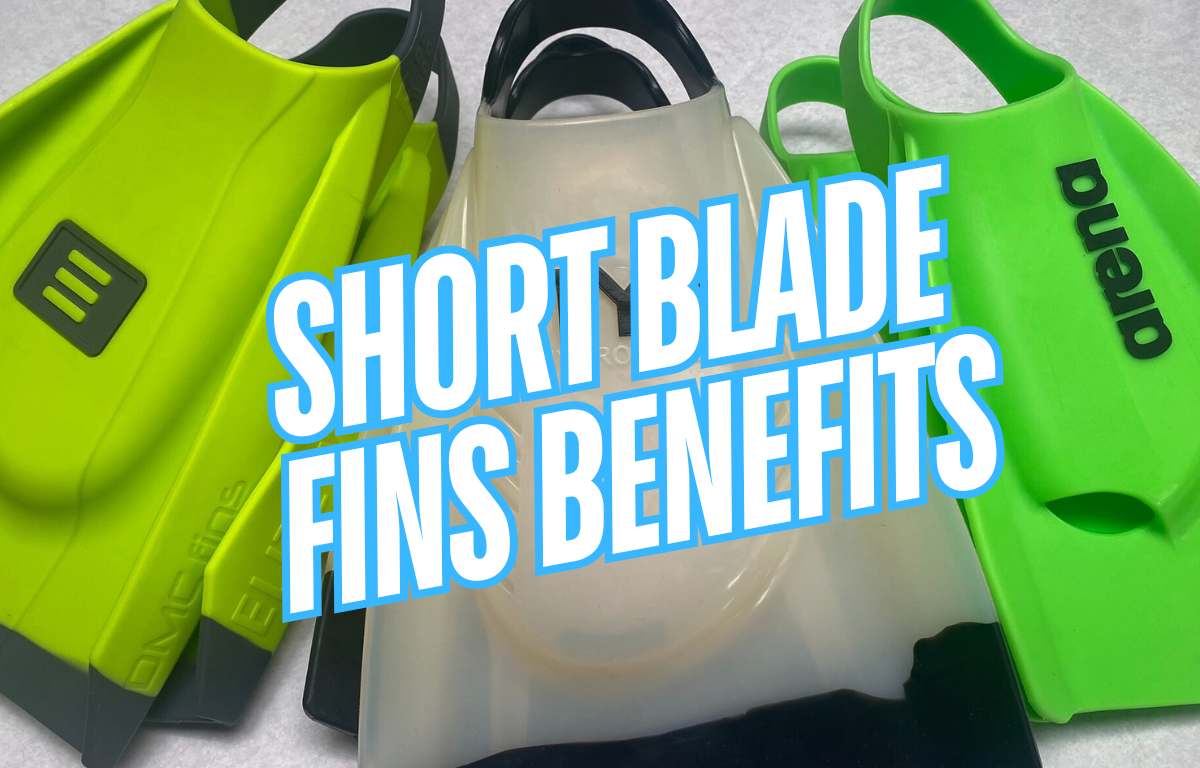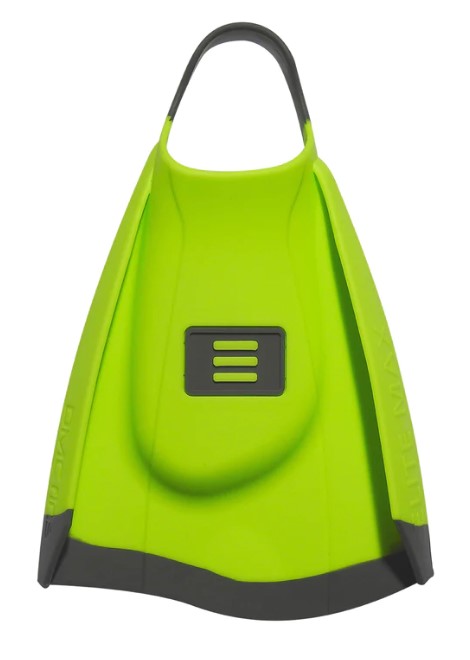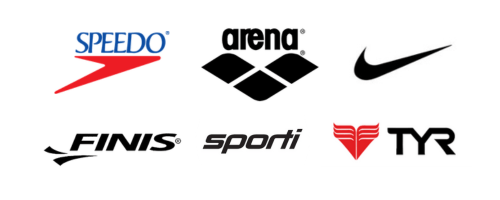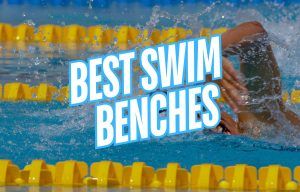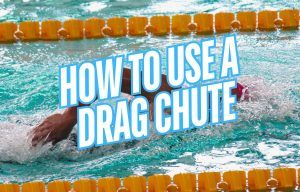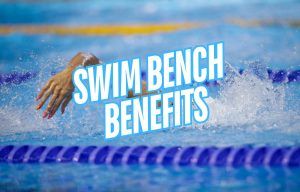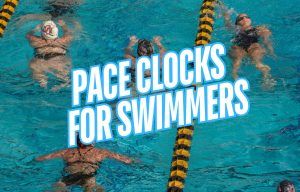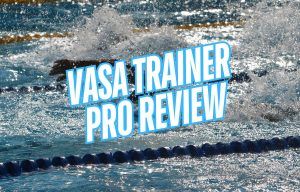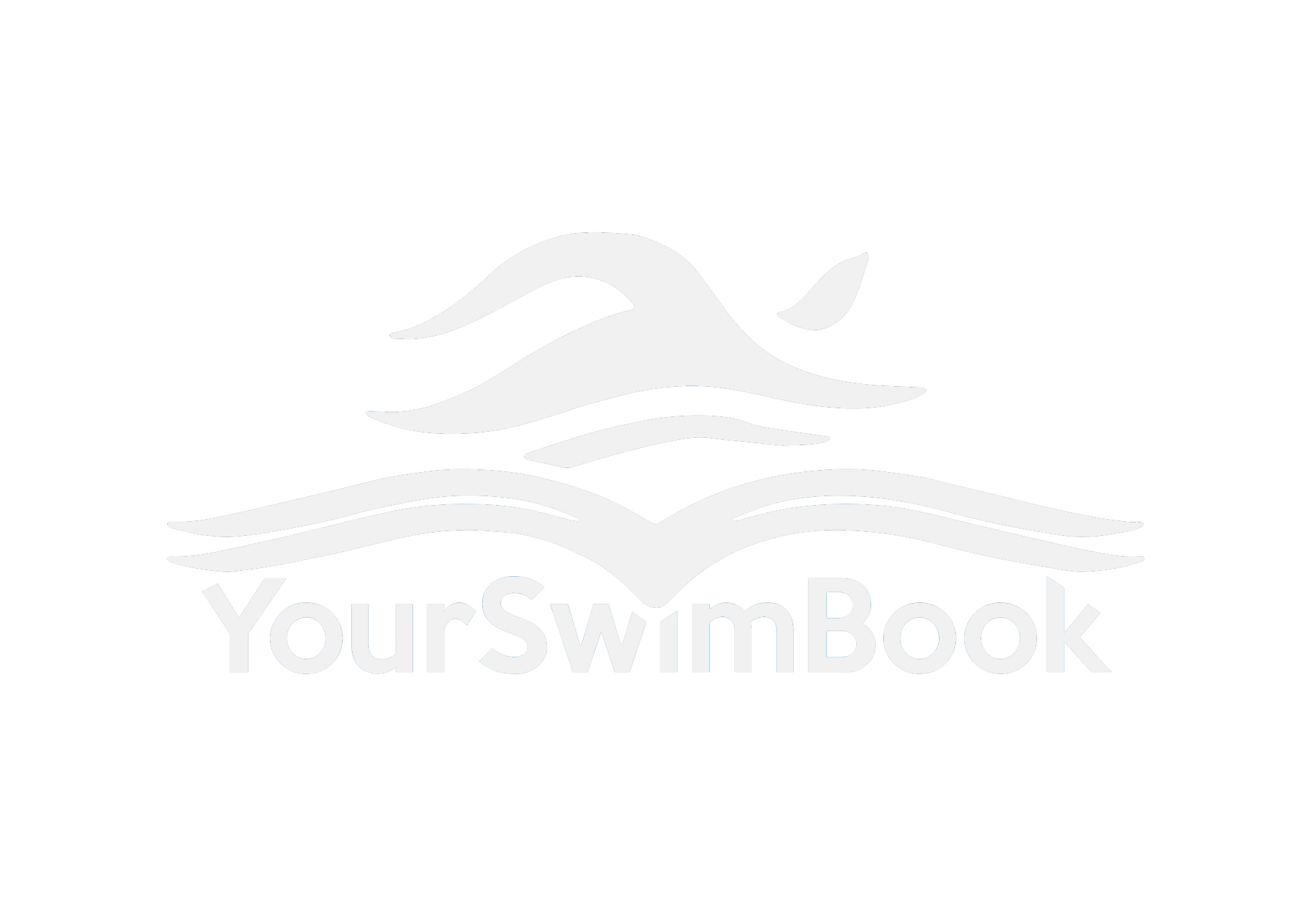Short blade fins are the best type of fin for swim training. Here are nine reasons why swimmers should opt for the short blade fins.
Swim fins are one of the best training accessories for swimmers.
Swim training fins are a popular, almost essential tool for building swim-specific power, learning speed, and sharpening swimming technique.
And, of course, swimming with fins is simply fun!
Who doesn’t like strapping on a couple of turbo-charged water propellers to their feet and rooster-tailing it across the pool?
But picking the right fins for your swimming can be a little challenging with all of the different types of fins on the market (and pool deck).
There are short and long blade fins. Open and closed heels. Silicone and rubber construction. And then there are performance features like drainage chutes, speed wedges, underside treading, and so on.
In this guide, we will look at the specific benefits of one type of swim training fin, the short-blade swim fin.
I particularly love short blade fins as they promote a higher kick tempo, better body position, faster acceleration, and are less likely to slip off when going fast and mastering high-performance flip turns.
We’ll also look at the type of swimmer who should opt for a medium or longer-blade fin and offer some expert recommendations on the best short-blade fins on the pool deck.
Let’s dive in!
The Benefits of Short Blade Fins
The reasons swimmers should use short fins during swim training include:
- Increased kick tempo
- Better body position
- Faster starts and turns
- Open heel design
- Comfort and durability
- Faster acceleration
- Ergonomic design
- Better directional kicking
- Limits excess knee bend
Next, we’ll look at each benefit in more detail so you can see just how effective this type of swim fin can be for improved swimming performance.
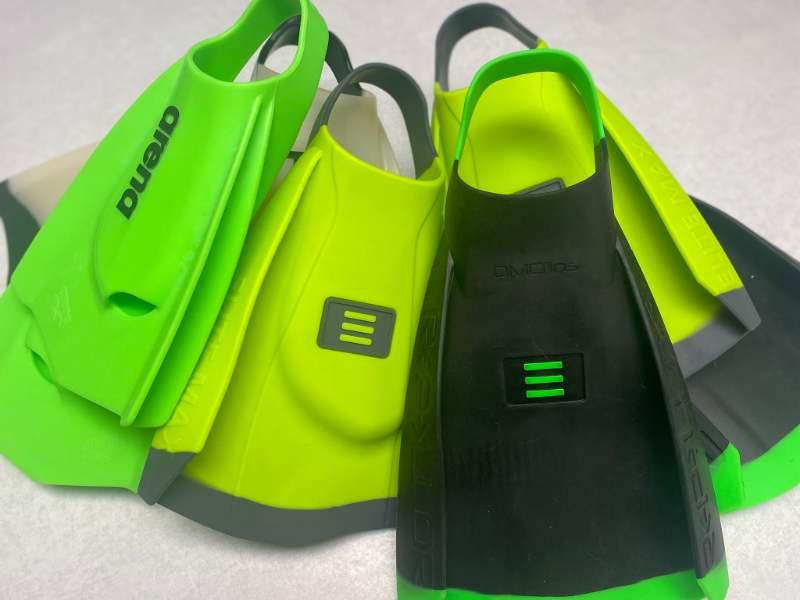
Increased kick tempo
Short-blade fins allow swimmers to kick at a higher tempo that more closely resembles the kick tempo they use without the fins, leading to better transfer and application.
This is crucial for competitive swimmers as it enables them to train their muscles, nervous system, and perhaps most importantly, their technique in a way that replicates non-fin kicking.
Fun Fact: A study (Sengoku et al., 2020) with elite Japanese swimmers found that four months of resisted kicking improved underwater dolphin kicking velocity. The swimmers significantly improved kicking frequency without increasing kick amplitude.
The higher kick tempo also helps in developing better timing and coordination between the arms and legs, leading to a more synchronized and powerful stroke.
Better body position
Short fins are excellent for promoting a more streamlined and balanced body position in the water.
Because they require a higher kick tempo, and swimmers don’t have the benefit of the added surface area from long fins to keep them buoyant, short fins encourage an engaged core and straighter body line.
Body position is crucial for smooth and efficient technique, and using shorter fins can help encourage swimmers to focus on proper body alignment.
Faster starts and turns
Short blade fins are advantageous when practicing starts and doing turns at high velocities.
With turns, the smaller surface area allows swimmers to rotate more smoothly and bounce off the walls. The open heel design on most short blade fins also means they are less likely to slip off when pushing off the wall, an issue that happens with closed foot fins.
When practicing starts, the short, compact design reduces interference when trying to “grip” the starting block with the feet and launch themselves effectively.
Open heel design
Short fins mostly use an open heel design that means that they are more likely to stay on when diving in and doing flip turns.
Fins such as the DMC Elite II, Arena Powerfin PRO, Hydro-Tech 2, TYR Stryker, and DMC Propellor all use an open hell design that helps keep the fins locked in when doing starts, turns, and swimming at ballistic (or what feels like ballistic) speeds across the pool.
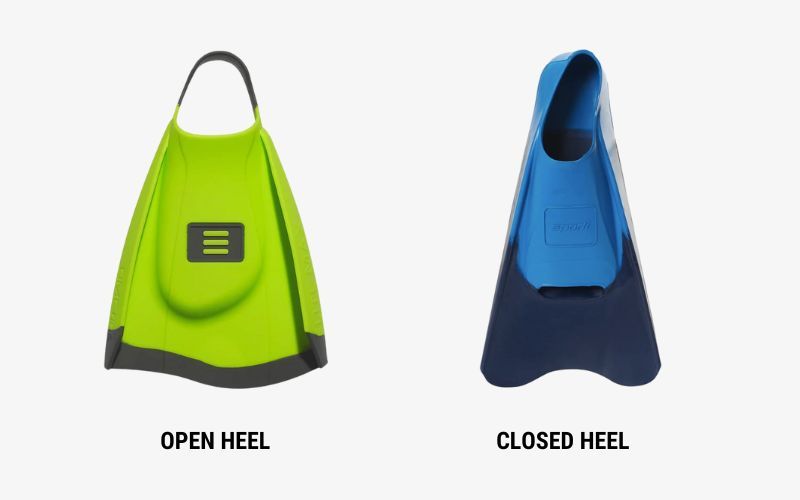
An open heel design also encourages a better range of movement and allows for added ventilation and reduced likelihood of blisters.
Note: Not all short-blade fins use an open-heel design. The Speedo Short Blade fins and Sporti Essential Training Swim Fins are examples of this.
Comfort and durability
Compared to long blade fins, short blade fins are more durable and are less prone to rips and tears.
This is particularly applicable to fins like the Arena Powerfins PRO and DMC Elites, which are made of 100% silicone that is softer, more durable, and doesn’t chafe and blister like many rubber fins.
One of the most frustrating experiences of using swim fins is kicking like a maniac for the duration of the set or workout and then emerging from the water with bright red lines across the top of the foot or back of the heel.
Faster acceleration
Short blade fins allow swimmers to get to top speed faster compared to long fins.
The shorter blade promotes a lightning-quick kick tempo, perfect for sprinters and top end speed sets where quick bursts of speed and power are essential.
Long blade fins, which can feel like you are generating more speed by virtue of moving more water, takes more time to begin seeing those peak velocities.
Ergonomic design
Short blade fins have designated right and left sides that are more ergonomic and promote a more natural kicking motion.
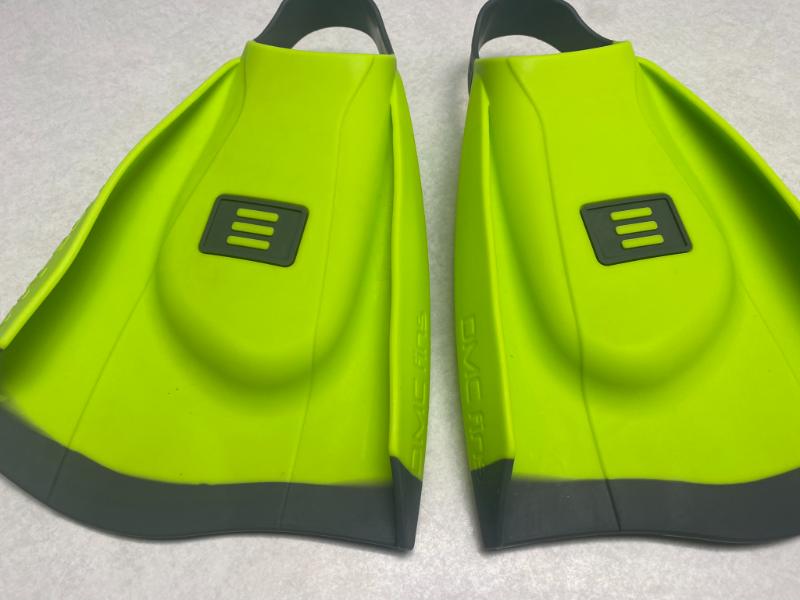
This includes a foot pocket that “leans” inwards to accommodate the length of the interior of each foot.
The side-specific design helps swimmers get a more secure and comfortable fit that reduces blistering and discomfort.
Fins that fit the natural contours and shape of each foot promote effective kick technique and simply feels more natural.
Better directional kicking
Short fins have wedges on the side that better “grip” the water and improve directional control when kicking. This feature helps swimmers move water in a more controlled way and make you really work for speed.
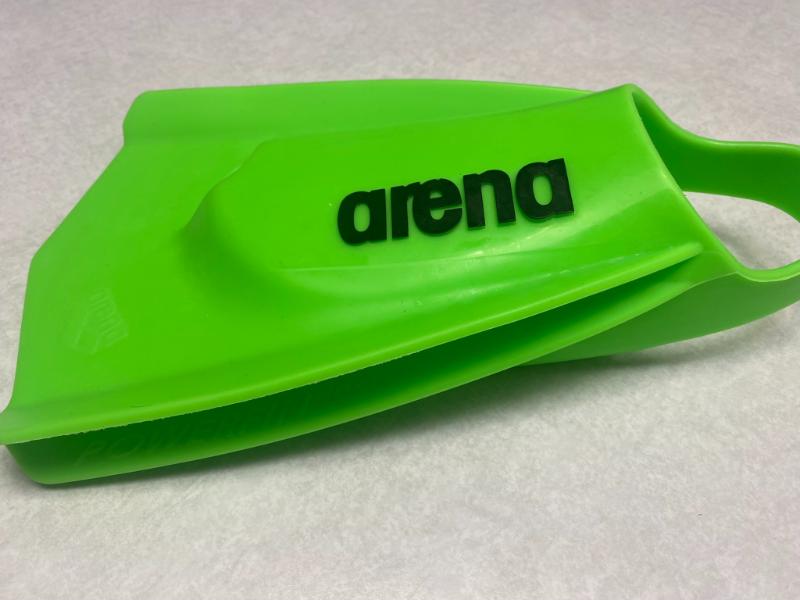
Longer fins don’t have these wedges, and as a result, the blades can “slip” in the water a little bit and make you feel like you are pushing water and vortices in every direction but where you want them to go.
Limits excess knee bend
Short blade fins promote a more natural kicking movement that also reduces excess knee bend.
Excess knee bend is a common issue with developing and even some experienced swimmers, and longer blade fins can exacerbate this issue.
The added surface area on long blade fins increases resistance and can cause swimmers to rely more on the knee flexion to generate power, adding unnecessary stress and torque on the knees.
When Short Blade Fins Aren’t the Right Choice
Like every other type of swim training accessory, short blade swimmers aren’t for everyone in the pool. Newer swimmers will find that learning stroke and kick technique to be easier with longer blade fins.
Other limitations of short blade fins include:
- Short fins require a level of progression. Short blade fins are heavier compared to long blade fins, which can lead to toe, foot, and calf cramps with untrained swimmers. Swimmers new to fins should start with longer fins to build lower body endurance for the increased challenge of short blade fins.
- Require some ankle flexibility. Short fins are more rigid compared to long fins and require a certain level of ankle flexibility to get the most use from them. Longer blade fins have added whip that can make up for restricted ankle mobility.
Note: Kicking, in particular with fins, is a form of ankle stretching. The resistance of the water against the surface of the foot creates a gentle stretch that extends the ankle beyond it’s natural range of motion (Willems et al., 2014). Other suggestions for improving ankle flexibility for a faster kick can be found here.
- Designed for experienced swimmers. Beginner swimmers will be better served with medium or long blade fins as they can teach newer swimmers optimal body position thanks to the increased buoyancy.
Choosing the right fins for your goals and abilities can make a huge difference to how training goes, so keep these factors in mind when shopping around for fins.
The Best Short Blade Fins for Swimmers
The best short-blade fins for swimmers are the Arena Powerfin PRO II and DMC Elite Max.
Both fins are made with soft silicone, feature a short blade design, have ergonomic foot pockets for increased comfort, and open heel designs for excellent range of motion when kicking.
Arena Powerfin PRO II
- The most popular short blade training fin for competitive swimmers
- Tons of colorways and limited-edition color patterns
- Less expensive compared to the DMC Elite Max
- Increased availability, as well. Always in stock on Amazon or SwimOutlet.
DMC Elite Max
Sprinters and elite swimmers will love the increased suppleness and blade flex of the DMC Elite Max, DMC Fins’ flagship training fin for competitive swimmers.
They feature a V-rail design that catches the water (avoiding lateral water displacement when kicking up and down), open heel design, and drainage chute underneath for optimal flow. You’ll buy one set and use them every day in comfort for the rest of your swimming career.
The main downsides include increased price tag ($85-95) and they are frequently out of stock with major online retailers like Amazon.
- Silicone is slightly softer than the Arena Powerfin PRO
- Will literally last forever
- Best short blade fins for larger feet
- More expensive, however
The Bottom Line
Short-blade fins are the essential swim fin for more experienced swimmers looking to crank up performance in the water.
They help increase the kicking tempo, improve acceleration, and are more likely to stay on when turning and sprinting compared to other types of swimming fins.
By understanding the specific benefits of short-blade fins, you can better understand whether or not they are the right swim fins for you and your goals in the water.
Happy swimming!
More Training Fin Guides
How Do Swim Fins and Paddles Change Swim Technique? Fins and paddles are popular tools for training and improving swim performance. But how do they impact technique and speed? Let’s find out.
5 Swim Workouts and Sets with Fins (for a Stronger Kick and Faster Swimming). Looking for some fun and productive sets with fins to add to your swim training? Grab your fins and grab these workouts and get after it!

